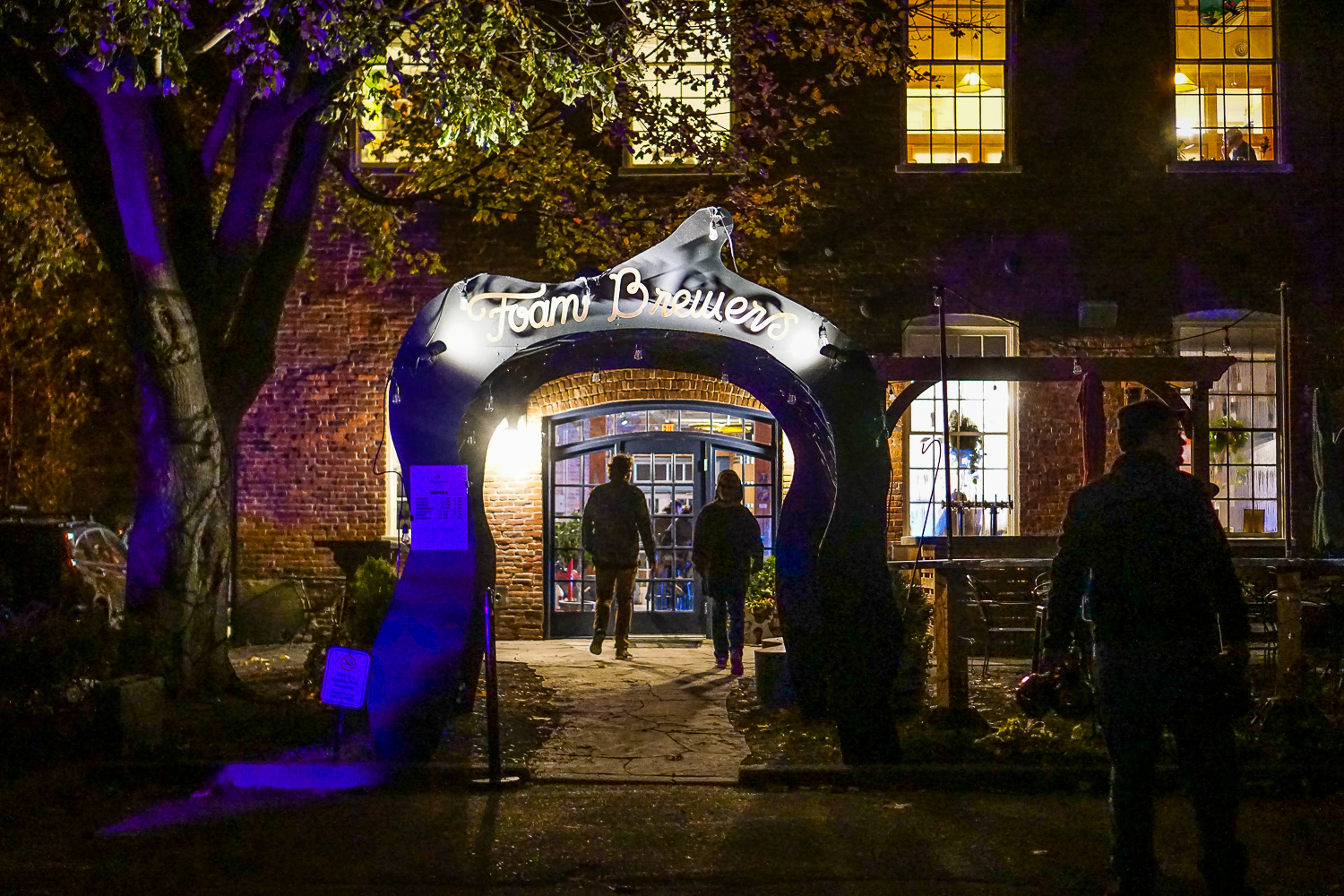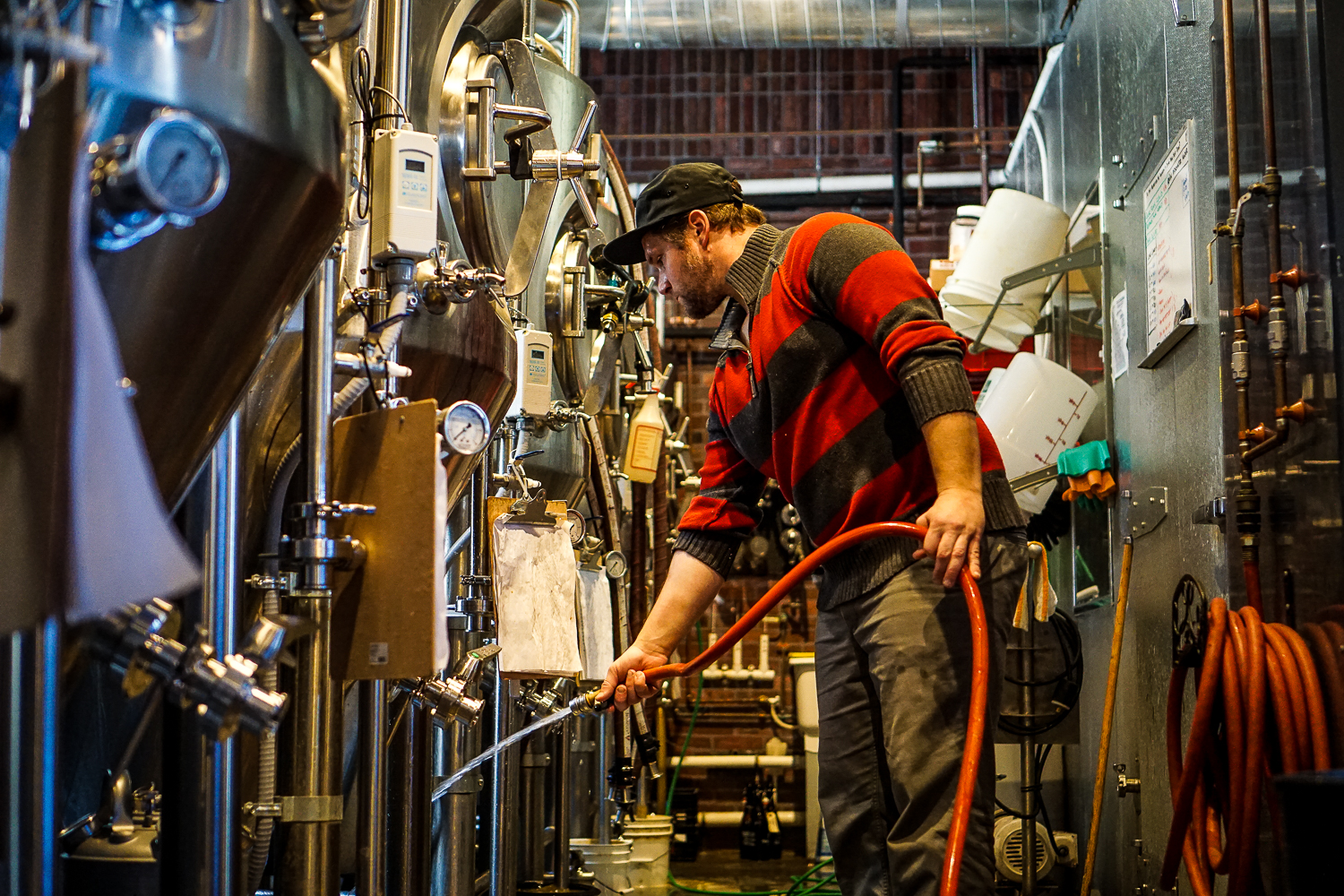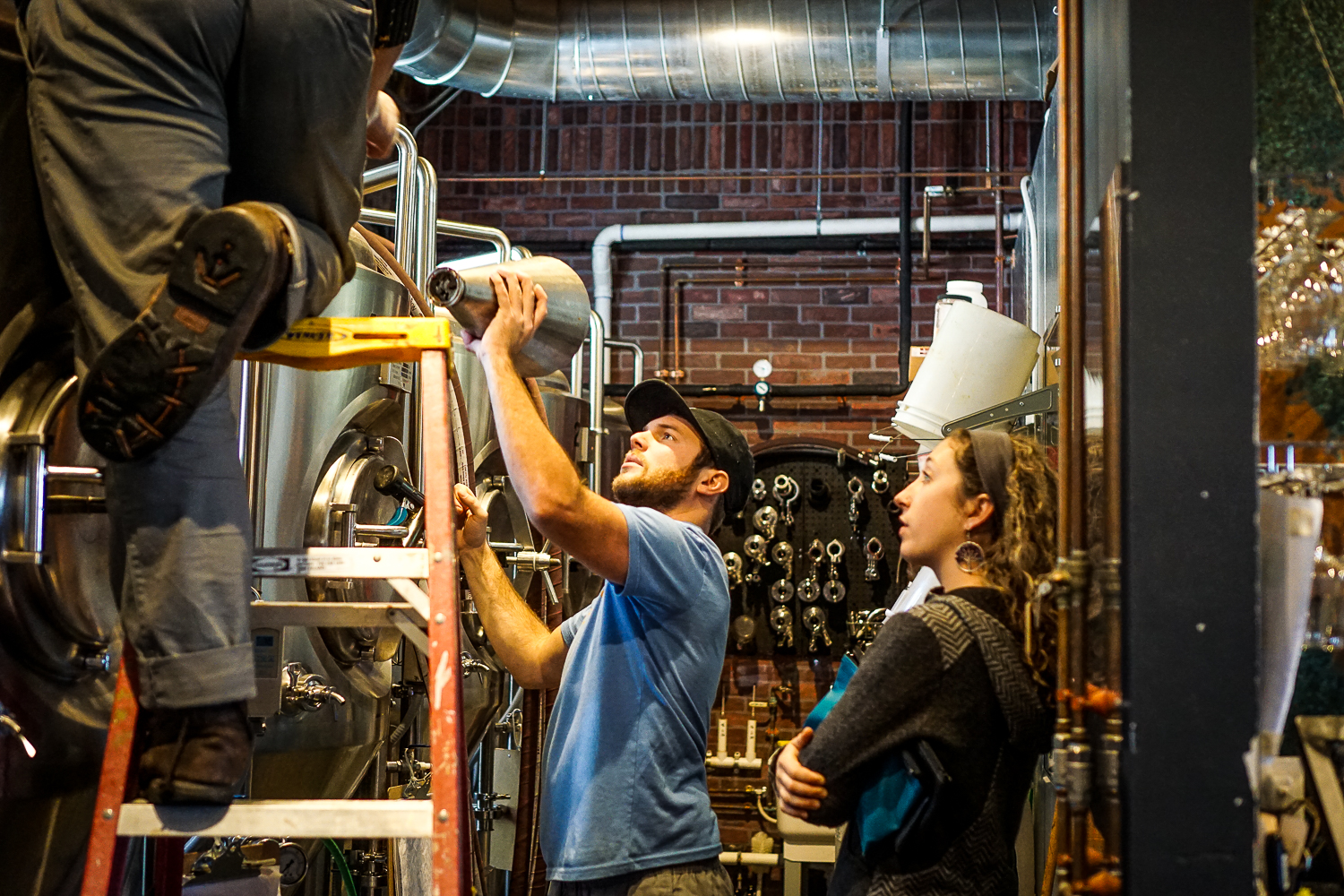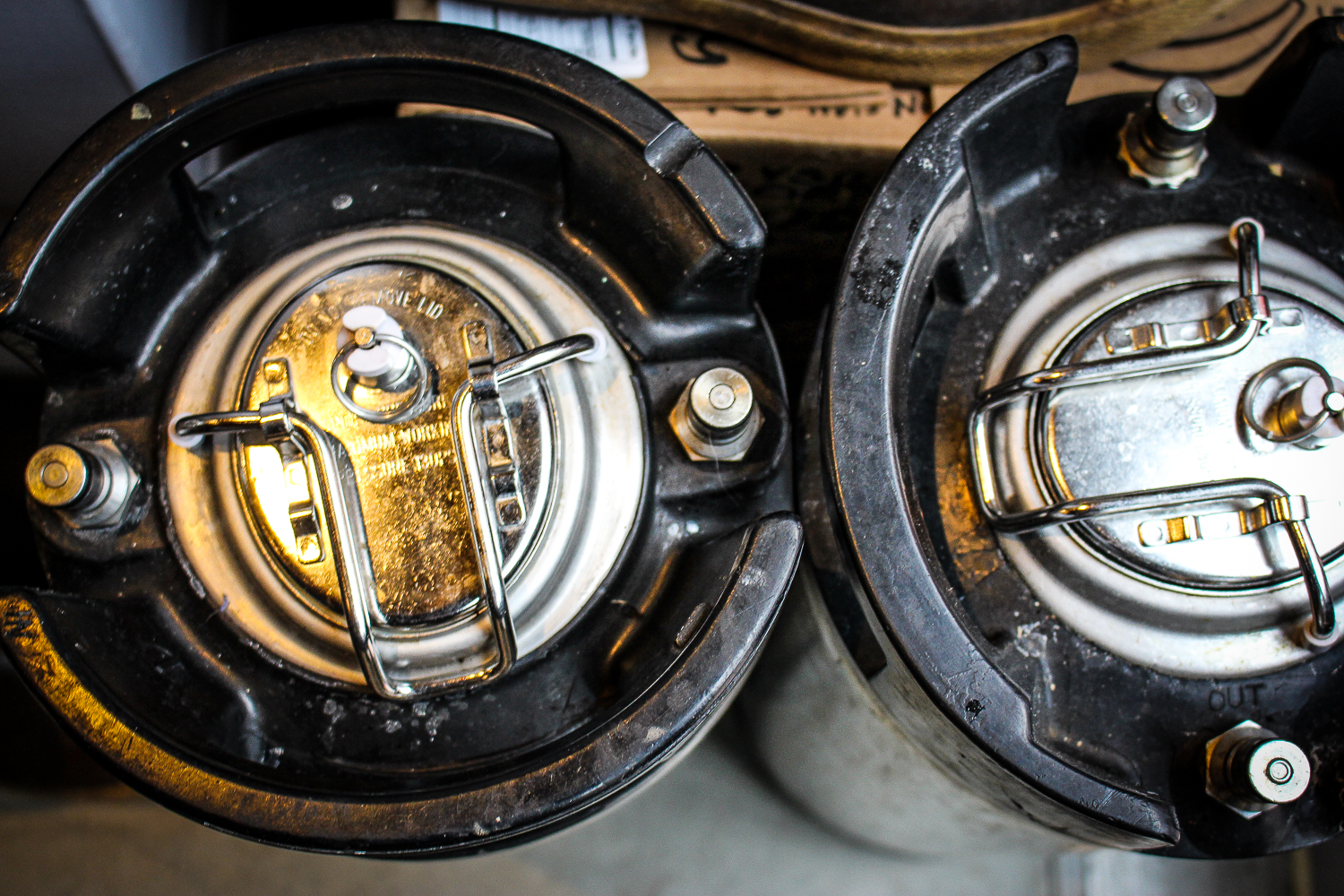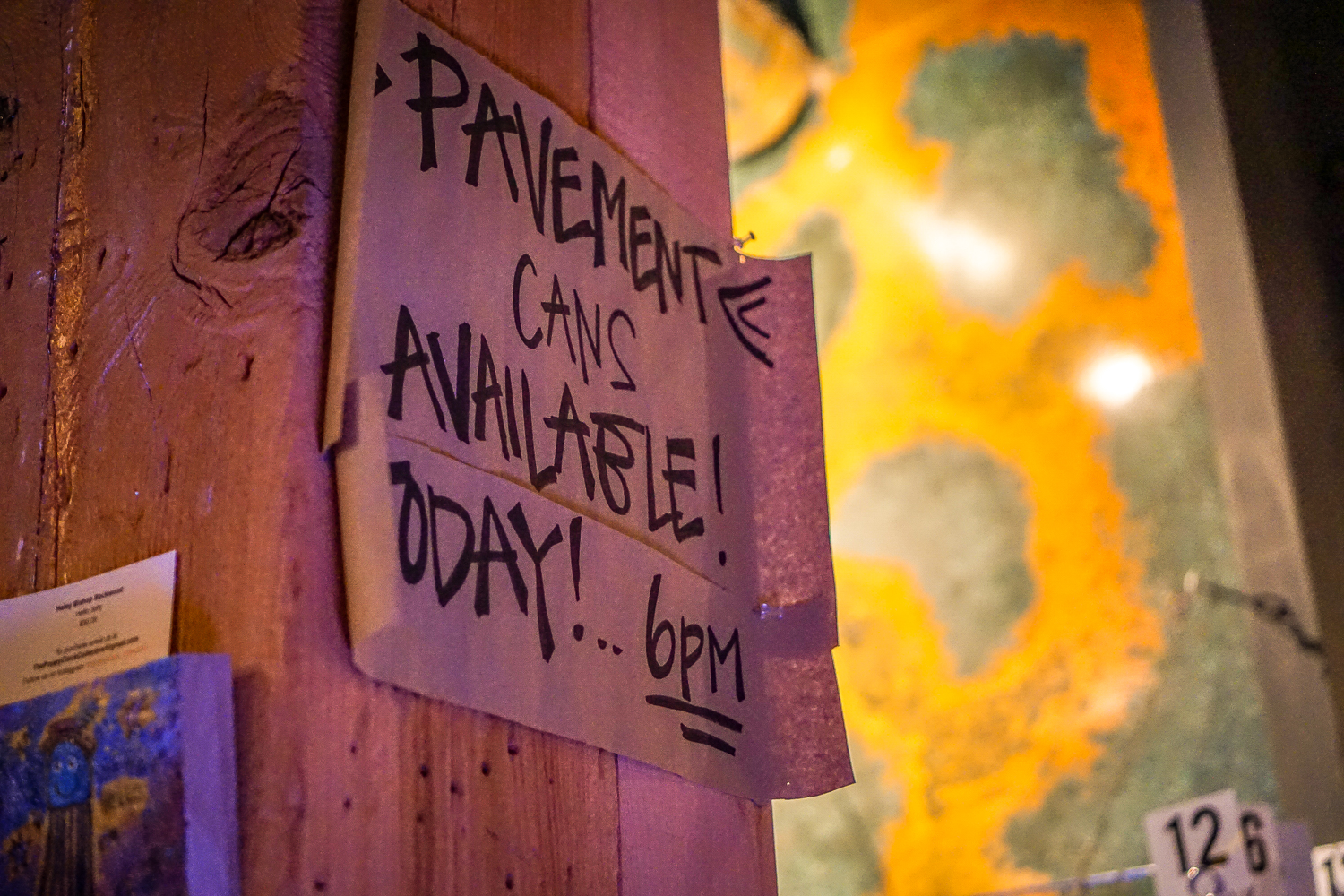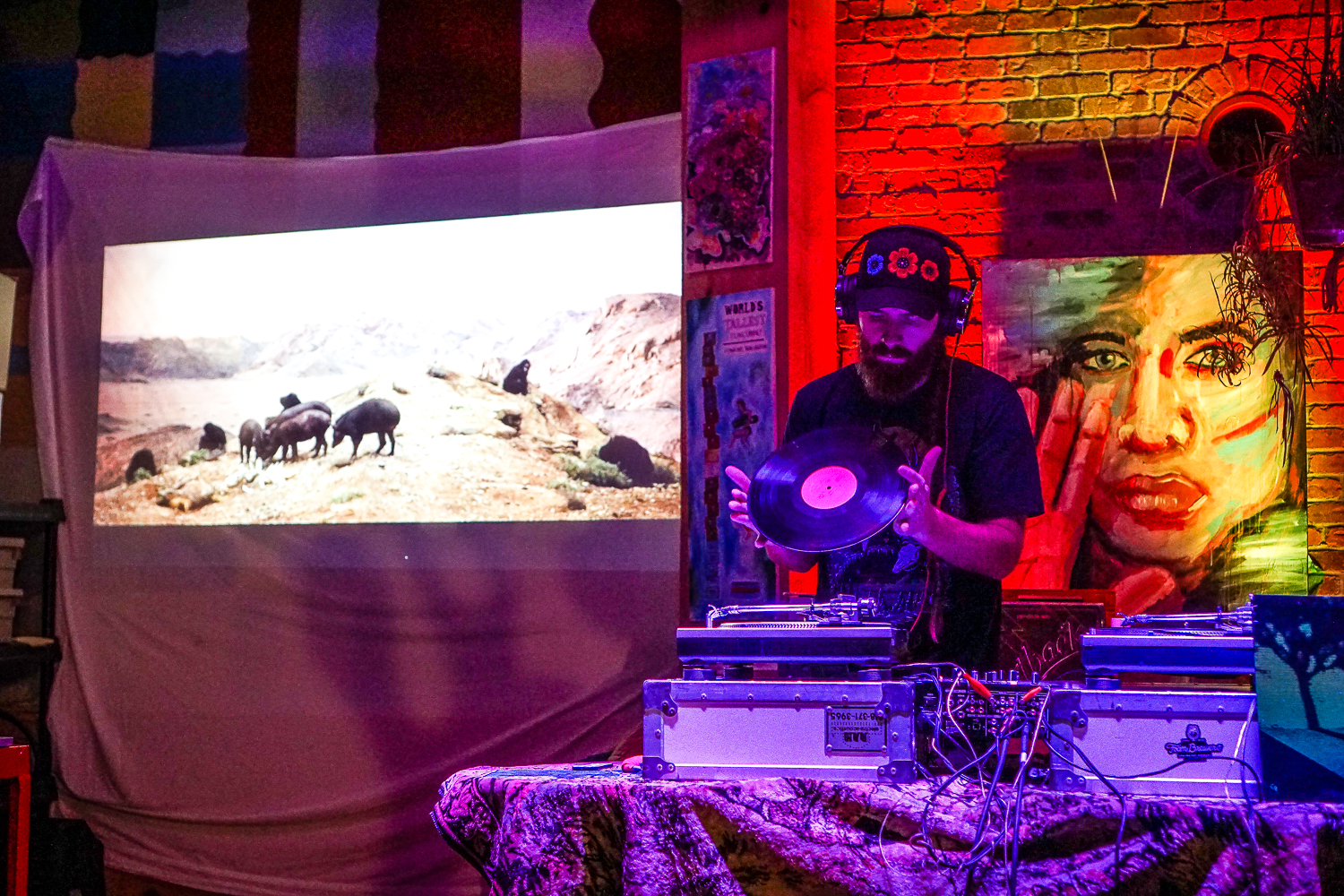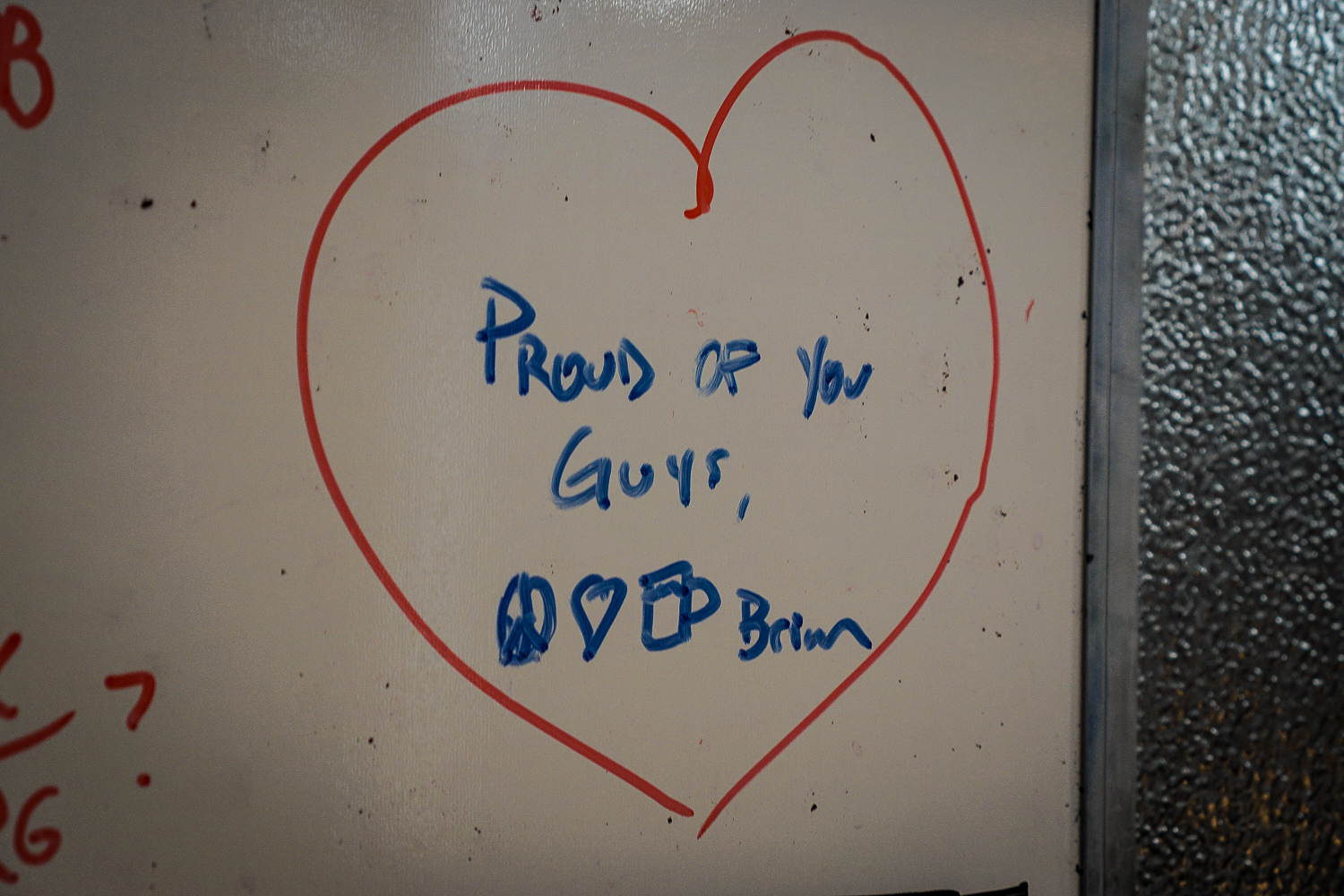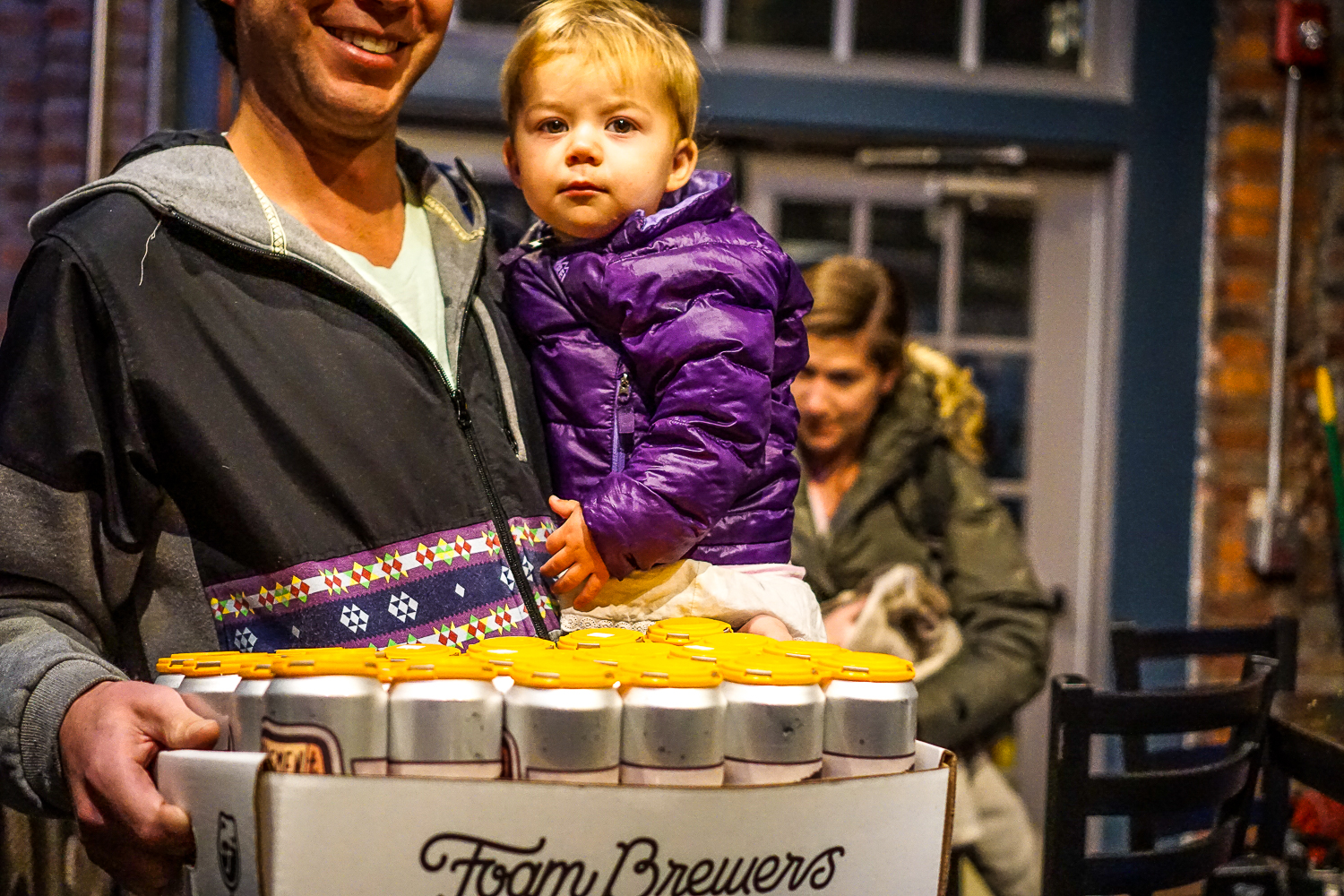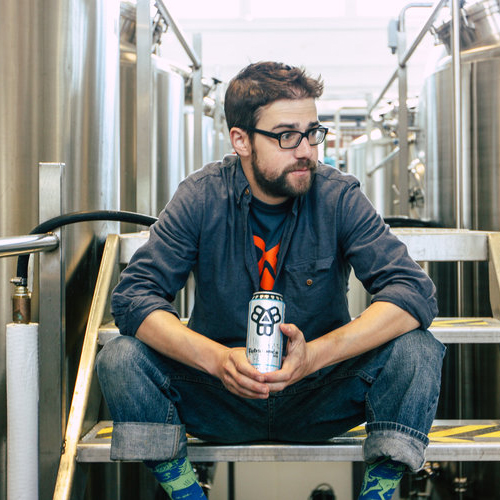Within the historic beer scene in Vermont, Foam Brewers is one of the new guys. And yet, in barely a year and a half, they’ve built a reputation for themselves in a part of the country known for fantastic brewing. But before it was a destination brewery in New England, brewing some of the most sought-after NE IPAs in the country, Foam was a start-up idea in the minds of five individuals who had no idea how it would all come together.
This is their story.
Twenty five years ago, Todd Haire was living in Hoboken, New Jersey. He didn’t have much going on in his life. Right there on the Hudson River, across from Manhattan, an old Maxwell House plant sat on the water. The building had been closed for some time, but Haire noticed a lot of activity going on at the old warehouse. As it turned out, someone was putting in a brewery.
“I ended up working there for free, said I’ll do whatever,” Haire remembers. “Little did they know I had a plan.”
It was 1993 and craft beer was still a new thing. Golden Ales, Amber Ales, it was all a pretty tough sell in New York, but a nascent scene was building despite it all. Haire had been to a few Michael Jackson talks, and he got involved in the local guild.
“Garrett Oliver would do presentations to the Guild, educating people about craft beer and making beer on that small scale,” Haire says. “It was a cool group at the time.”
As part of the guild, Brooklyn Brewery offered up a Michael Jackson Beer Education Scholarship through the American Institute of Wine and Foods. Haire applied for it and got it. Through the scholarship, Haire got his formal beer education at Siebel Institute, enrolling in the Diploma course. “I was one of the craft brewers there, most of the folks were from bigger breweries,” he remembers. “Like, Jennifer Yuengling was in the class. Bradley Coors. These folks had the names. It was just a little weird.”
Once back from Siebel, Haire would work at a little brewery in Manhattan in Union Square for a few months. For his next gig, he relocated to Tremont Brewery in Boston, where Chris Lohring, now with Notch Brewing, was doing his thing early on. After that, he put in some time at Magic Hat in Burlington, Vermont.
“I remember coming up here in 1997 and getting interviewed by Alan Newman and Bob Johnson, the co-founders,” Haire says. “At that time, it was probably 1,500 barrels of beer that they were making, a little small mom-and-pop brewery built on Vermont ingenuity and cobbled together.”
Haire started as a shift brewer, but also spent time bringing quality standards to the packaging side. He’d spend 14 years at Magic Hat, moving up to the head brewer position and, eventually, brewmaster, when Johnson left. Magic Hat scaled from that 1,500 BBLs to 180,000 BBLs, becoming the ninth-largest craft brewery in the country.
“I was getting a little bewildered with that whole scene,” Haire says. “Just watching beer going out everywhere, there was no soul to it. We were brewing 24 hours a day, 7 days a week, 56 brews a week on a 50-barrel system. You’d lay in bed and be like, ‘Shit’s just going on, man.’ It just got a little nerve-wracking and I lost the thrill. Everything had changed. I was looking for an escape hatch, and all of a sudden the brewery got purchased.”
“The brewery is a community gathering space [full of] beer nerds, college kids, and families. Foam is comfortable, it appeals to a wide range of people, and the beer is fucking good.”
Back before our current age where brewery buy-outs are more commonplace, Magic Hat, which was already a part of a holding company, Independent Brewers United, was acquired by North American Breweries. The massive 2010 deal included Pyramid and MacTarnahan’s as well.
Haire would find the escape hatch he was looking for through Bill Cherry, founder of Switchback Brewing Company. Located right down the road from Magic Hat, Haire connected with Cherry after the buy-out and came on board as head brewer at Switchback in 2011. There were only four other people working in production, and as Switchback looked to ramp up production of Switchback Ale, their flagship, Haire would need to hire some help.
In 2012, Sam Keane was just about to graduate from the University of Vermont with a degree in nutrition and food science. Keane’s advisor taught a class on brewing and homebrewing, keeping his carboys in the microbiology lab, fermenting away.
“It sparked my interest,” Keane remembers. “Obviously, brewing was extremely interesting. I figured I would reach out to local breweries. Switchback needed someone to come in [at the] bottom level, so Todd hired me.”
Right across the lake, Bobby Grim was at school at the State University of Plattsburgh, New York, also studying food science and human nutrition. Homebrewing with his father in college, he quickly got really into beer.
“I started a homebrew club in Plattsburgh, North Country Homebrewers,” Grim recalls. “I got to meet people I hadn’t been able to meet before, talk about brewing, and I decided that I wanted to do this professionally.”
“I was one of the craft brewers there, most of the folks were from bigger breweries. Jennifer Yuengling was in the class. Bradley Coors. These folks had the names. It was just a little weird.”
Grim would apprentice for a year as he finished school at Plattsburgh Brewing Company. On their 7-BBL brewhouse, Grim learned the ropes and gained an appreciation for what it’s like to work at a brewery. Then, like Keane before him, he realized Switchback would be needing help.
“I dropped off my resumé and got a call from Todd, telling me to come in for an interview,” Grim explains. “A couple months later, I was working at Switchback flipping kegs.”
The two newest hires in production at Switchback would start at nearly the same time, with Keane starting just a week prior to Grim. The two quickly became friends, and rivals in a sense, each “busting ass” to impress. Haire would give the two more responsibilities, moving them onto cellarman and brewer’s assistant positions. Keane and Grim would be the leads on commissioning and operating the new bottling line. Then the pair would both start brewing.
Keane went to the big brewhouse at Switchback, brewing on a 66-BBL, German copper system. The brewhouse was dedicated to the brewery’s flagship, Switchback Ale. Day after day, Keane’s working life was “Big Blue,” the beer’s nickname of sorts. “After a while, just making one Pale Ale every day is kind of exhausting,” he says. To break that monotony, Keane would work on developing an internal sensory program, calling upon employees from every department at Switchback to sit in on structured beer tastings.
Grim would work directly with Haire, brewing on a 5-gallon homebrew system and then scaling up beers onto Switchback’s 15-BBL system. Grimm was subject to intense criticism from Keane’s sensory panels, which would provide feedback on these pilot brews. Grim and Haire would brew around 120 different pilot beers. Not all were hits.
“Those beers got brutalized in sensory,” Grim says. “Everyone’s a professional at that point and knows exactly what’s on and off with those beers. It was like giving the keys to the kids. There’s some humility in all that, you learn and go with the flow.”
“They had a different mindset at Magic Hat—they were so forward thinking and ahead of the trend. They valued creativity, and had appreciation for the off-beat.”
The three brewers started gravitating together in the workplace toward the more exploratory side of Switchback. “They were great guys to hang out with, talk about beer, teach about beer,” Haire says of Grim and Keane. The three found some common ground.
“Todd and Bobby and myself would talk about the pilot brews, talk about the lab stuff, and talk about different ideas of what we wanted to do with beer, and that’s kind of where the whole idea began,” Keane remembers. “Just getting away a little bit from your traditional ales. There’s so much that you can do with beer.”
Meanwhile, Haire was having “escape hatch” thoughts again, this time about Switchback. He was homebrewing on the side, brewing wild and funky beers under his House of Fermentology moniker. With beer author Bill Mares, he traveled to de Garde, Cascade, and Ale Apothecary. Inspired, the pair rented space in an industrial park and opened House of Fermentology in earnest, brewing a batch of wort at Zero Gravity in Burlington, and sending the beer to oak at HOF. Haire’s creative outlet had begun.
What started as lighthearted conversation at a colleague’s wedding quickly turned serious.
“Honest opinion, do you want to start a brewery?” Grim asked.
“When he said that to me, it was as if I’d been waiting for it,” Keane says. “Obviously, my answer was ‘absolutely.’”
The two agreed to go all-in, started meeting regularly and developing a business plan, writing things down. They choose the location—their home, Burlington. It was the logical place for their project. They started thinking who they wanted to do this with. Of course, the answer was Haire.
“The plan all along, in my mind, was to beg Todd to come aboard,” Grim says. “We were very hopeful, but not necessarily assuming that he would come on board with two kids that he had hired a few years before.”
“It was hugely anxiety producing, asking our then-boss, and someone we see as just a legendary brewer, so we wanted to make sure the business plan was perfect when we pitched it to him,” Keane adds.
“Those beers got brutalized in sensory. Everyone’s a professional at that point and knows exactly what’s on and off with those beers. It was like giving the keys to the kids. There’s some humility in all that.”
Grim and Keane approached Haire about the idea, asking him out for a meeting over a couple of beers at Manhattan Pizza.
“It was definitely awkward, definitely a little weird,” Keane says. “Todd thought we were sitting him down to tell him we were quitting. But in reality, we were asking him to join us.”
It was a lot to hear. Haire would think over the proposal for a couple weeks, creating a standoffish atmosphere at Switchback, with Keane and Grim both waiting for their boss to process it all. After what seemed forever, they got an answer.
“He came in one day, after not really talking to us for a few weeks, with a huge grin, high fives to me and Bobby,” Keane says. “‘All right! I’m in, let’s do this!’”
“I was getting a little bewildered with that whole scene. There was no soul to it. It just got a little nerve-wracking and I lost the thrill. Everything had changed. I was looking for an escape hatch.”
Haire would put his thumbprint on the business plan, rounding things out, and the three would put a timeline together for choosing a location and fundraising. Fundraising proved a challenge. Grim and Keane were both young guys, production brewers. They didn’t have much. The banks were willing to provide a loan, but only if Haire, the only one of the group with any true assets, would put up his home as collateral.
“We absolutely said no to that,” Keane says. “It just wouldn’t be fair for Todd to have to put more skin in the game for this.”
As fundraising efforts continued to drag, the trio met nightly, working through paperwork and permitting. They found what was seemingly their perfect location, almost by happenstance. An old sushi restaurant, Sen Sai, on the waterfront of Lake Champlain popped up on a local real-estate website. Jumping on it immediately, they signed a letter of intent with a clause conditioning the lease on the fact that they’d succeed in raising funds. If they didn’t get the loan, there would be no brewery there.
Keane and Grim turned to Steve Densham from the Small Business Association of Vermont.
“He was extremely helpful for us, he answered every question that we had,” Keane recounts. “He gave us language to use when approaching banks. We could obviously say we’re gonna be successful, but how do you prove that? It’s tough, you really need someone to take a risk.”
But without former business experience or collateral, no one was really interested. Densham would go on to connect the guys with Will Hamilton, a loan officer for Community National, a bank out of Derry, Vermont. Community was looking to establish a Burlington portfolio, and it turned out he actually read the business plan. “Will was the first person to bite the bullet and take a risk on us,” Haire says.
With a deposit already down on the brewhouse and time running out on the LOI for the location, Keane and Haire met with Hamilton at Skinny Pancake, a Burlington staple for crepes and craft beer. Over a round of Heady Toppers, they made it official.
As Grim and Keane spent nights demo-ing the space, ripping down drywall and ripping out false wood floors, Haire reached out to an old friend, Russ Bennet, to begin designing the space. Bennett designed the Artifactory, Magic Hat’s tasting room. He had also designed Phish shows and festivals since 1996, and is the sole designer of major music festivals like Bonnaroo in Tennessee and Outside Lands in California. His arrival was kind of an event in itself.
“It was almost as much as Russ was interviewing us as we were interviewing him,” Keane says. “He’s picky about who he chooses to work with, but with just what the space was, he was on board and super excited. We worked out with him what we needed functionally, as far as brewhouse, fermentation space, and cooler, but also, how do we make this the most kickass space in Burlington, where people are just having a blast without even thinking about it?”
In conjunction with artwork purchased from a local artist, Christopher Solbert, Bennet put together the space with metal fixtures, waveform shapes, and lights. The result is vibrant, inviting, playful, creative and fun. Not to mention completely unique.
Keane was first to leave Switchback officially in September 2015. Grim stayed on until Thanksgiving, and Haire remained on staff until December. As the project started to become real, and the opening of the brewery quickly neared, the three realized they couldn’t do everything themselves and be successful. They would need help. They would turn to a couple other established relationships, also former Switchback employees, to complete the team at what would become Foam Brewers.
Oh, and the guy who was getting married when the idea of Foam first formed? His name is Josh Bayer, and he was eventually Foam’s first production hire.
Dani Casey started working in the industry right out of college at Magic Hat in the Artifactory, tending bar for a summer.
“I drank a lot of vodka in college, so, I really wasn’t into beer before—it was all sort of a new thing,” she says. “I used to work at a bagel shop on Route 7, and all the Magic Hat folks would come in because it was right across the street. I saw an ad for the job and I went in there. They all knew me as ‘the bagel girl,’ so I got the job.”
Before long, she worked her way into the marketing department, a group of six with Alan Newman himself at the head. It was a small group, and Casey was a part of the street team, a “Merry Prankster” who would promote the brand at festivals and events that Magic Hat would sponsor.
“It was a great learning experience for me,” she recalls. “Alan, himself, is a serial entrepreneur, and he has all these really crazy ideas. They had a different mindset at Magic Hat—they were so forward thinking and ahead of the trend. They valued creativity, and had appreciation for the off-beat.”
Magic Hat started out great for Casey. She met and became friends with Todd Haire, working with him when he would attend certain events. Then the buy-out happened. Casey’s job was dissolved, so she went back to the Artifactory where she became the GM.
“Everything that we were doing progressively came to a halt, and then things just started going in reverse,” she remembers. “Everything just changed, and all these people came in and slowly killed the brand.”
While she wasn’t happy with the new Magic Hat, she didn’t want to leave the industry. “There are only so many places you can go,” she says. “There weren’t a lot of options, and I didn’t want to move. When the opportunity at Switchback arose, I jumped right at it.”
Haire, who was then at Switchback himself, gave Casey a good recommendation, and she was hired on as the taproom manager, a position that turned out to be fairly straightforward for her. She excelled at it, but it wasn’t necessarily fulfilling.
“Coming from Magic Hat, especially in the early days, and then going to Switchback, I was looking for something more creative and fun,” Casey says. “Both the work environment and the culture.”
Haire, now doing his House of Fermentology beers (a side project that still exists as a separate entity and label, but will one day soon be brought under the Foam fold), started dropping hints. He eventually asked to meet up with Casey for a beer, and when she arrived, Keane and Grim were sitting there. They pitched the whole idea as a team: they needed her to run the front of house.
“I never thought it would be a possibility for me, to be a partner in a brewery,” Casey recalls. “I thought about it for a while. I always knew at the end of the day that I believed in them as brewers. At the time, I was thinking about getting married and having kids, and was thinking this is going to be a big endeavor. But how can you turn that down?”
Back in high school, Jon Farmer was always the one who’d go out of his way to pick up whatever craft beer he could find. Like so many others, he started homebrewing in college, and quickly started dreaming of opening his own brewery. He just as quickly discovered that the more he learned, the less he knew.
But Farmer did know Keane from his early days at the University of Vermont. And Keane clued Farmer in on a job available in the front-of-house at Switchback, a position that Farmer would take up during his senior year. With his foot in the door, Farmer would work his way over to packaging one day a week, and then into the production side full time. He worked closely with Keane, Grim, and Haire, getting to know the guys and continuing to learn about beer and brewing.
“How do we make this the most kickass space in Burlington, where people are just having a blast without even thinking about it?”
But there was only so much growth opportunity at Switchback, and on a crowded production team, Farmer was stuck. He found opportunity elsewhere: the Agency of Transportation for Geographic Information Systems. Farmer was incredibly hesitant to leave beer, he didn’t want to leave his dream. Grim, however, gave him reassurance: “Beer will always be here. You can always come back to it.”
Eventually, Grim and Keane would invite Farmer back. With Haire already on board, the trio looked to Farmer as a utility player. “I wanted to make myself useful,” he says. “I developed the website—that was something I could do in the early days. We didn’t need to pay someone else to do this.”
Instead of production, Farmer would focus on some of the more intangible, creative aspects of the business. Through the website, he’d take on social media responsibilities, booking musical acts, sound production in the space, oh, and all of the marketing.
“It’s definitely not at all what I imagined when I left V-Trans,” he says. “I was leaving thinking that I’d be more on the production side. I’ve actually created and stumbled across a role that is fulfilling at Foam. A lot of these roles could be transferable across many industries, but this role is very particular to Foam.”
Foam Brewers opened its doors on April 28, 2016. “I was actually still painting the front door as people lined up to get in,” Keane recounts. “It was pretty remarkable.”
Since opening, the brewery and its five-person team has garnered praise from consumers and industry peers alike.
“As you may have heard, the beer market in Vermont is competitive, especially for those producing the style heard round the world,” says Matt Canning, Operation Manager and Beer Concierge at the Hotel Vermont. “Foam's success is undoubtedly linked to their quality and range of styles. Obviously, their NE-style IPAs draw a lot of attention, but their foeder beer and mixed fermentation ales from House of Fermentology are world class. The brewery is a community gathering space—beer nerds, college kids, and families occupy the same space. Foam is comfortable, it appeals to a wide range of people, and the beer is fucking good.”
It really is fucking good. From bombed-out NE IPAs and DIPAs that boast overwhelming aromatics of tropical fruits and dank resin, to delicate, yeast-driven Saisons and crispy Lagers, Foam’s lineup is a robust one. There are plenty of options when it comes to beer in Burlington, but the beers at Foam could prove to be the standard-bearer in the years to come.
People have noticed Foam outside of Burlington, too.
“In a competitive New York market, brands come and go,” says Matt Lefkowitz, the Specialty Department Brand and Sales Manager for Union Beer Distribution, the distributors who brought in a pallet of Foam beer for a handful of events late last year in New York City. “I think it’s fair to say that, at this point, New Yorkers won’t just try anything once, but are truly seeking out a superior product. Foam is exactly what New Yorkers are looking for. A brewery making next-level beers by great people, with a trustworthy and respectful brewery lineage, and with a brand identity that is fun and clearly tied to music and the great state of Vermont. Who doesn’t love great beer, Vermont, and music?”
Keane and Grim, along with Bayer, run the brewing operations. Haire serves as brewmaster, responsible for production scheduling, sourcing materials, and designing beers at a high level. He also still runs the House of Fermentology, a side project that he and Mares will fold into Foam officially in the near future.
Casey is responsible for the front-of-house, and everything behind the scenes from bookkeeping to permitting to payroll. Farmer is the marketing and creative lead, responsible for social media, events (both in-house and outside), and creating the labels for Foam’s latest venture into cans, working with local artists on the artwork.
The brewery itself has expanded into a second facility, which they’re calling the “Hinesburg Annex,” in the nearby, titular suburb of Burlington. That facility houses five 15-barrel fermenters, four 10-hectoliter foudres, and the brewery’s canning line. Keane and Grim brew 7-barrel batches at the brewery in Burlington, fill up a portable stainless steel tote designed for moving liquid, and send the wort to Hinesburg where the tote is emptied into a tank and the process repeats itself. It’s a hell of a production day, but it’s worth it because this enables canning that simply isn’t possible at Foam’s Burlington location.
That canning line is getting a real workout. Foam Brewers has fully taken advantage of the own-premise model to become another must-visit Vermont destination for beer enthusiasts.
“They brew beer worth driving for,” Canning adds. “If lining up for releases is your thing, they do that, too. For those more interested in beers on the sour spectrum, they offer House of Fermentology. There is something for every beer enthusiast. I am 1,000/1,000 on recommending Foam. No one has ever returned from their brewery to our hotel disappointed.”
But moreover, Foam has become the creative outlet for these five people from Switchback—Haire, Keane, Grim, Farmer, and Casey—all putting their thumbprint on a shared project.
“It’s a weird world out there,” Haire says. “If you can create a nice place for people to come, have a beer, sit down, and have a conversation, it’s a win. I think it’s good for these guys. I’m up there in age, and they get to take this to a new level. I wish I was 28 and doing this shit, but it’s good for them. Truth be known, it’s where they go now, and what they’ll do.”
